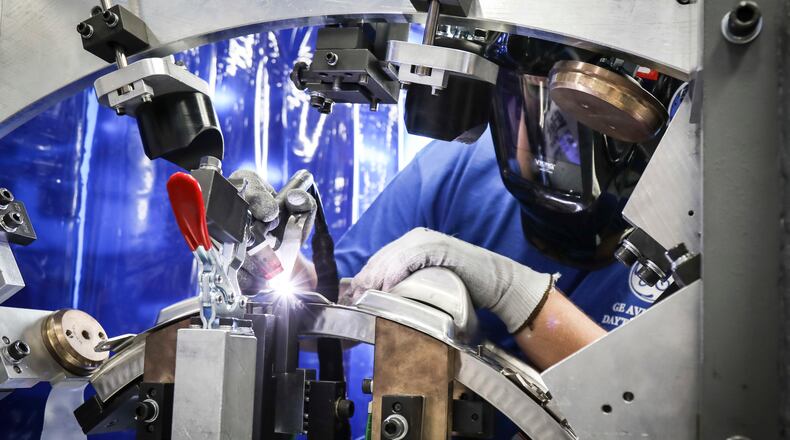The result matches what previous surveys have consistently reported. What complicates this year’s survey, of course, is the pandemic and associated supply chain concerns.
“The availability and retainability of high performing, technically skilled workers continue to be the top challenge for Dayton region manufacturers,” the DRMA said in a statement. “This struggle is compounded by increasing labor costs, expanded employee leave regulations and other COVID-related mandates.”
Doug Barry, owner of the Barry Staff staffing company in Dayton and Springfield, said the pandemic and supply chain have conspired to make a longstanding problem worse.
Barry has been building a new home for his company near Perry and Ludlow streets. He said he finds that construction contractors with whom he deals have consistently told him they can’t hold on to good workers.
“It’s been everyone,” Barry said. “From the demo(lition) guys, the framers, the plumbers, the electrician. Even the guy doing my handrails. Everybody across the board, they say ‘We don’t have enough people.’”
“There’s no playbook on how to handle this,” Barry added.
Greg Muhlenkamp, chair of the Dayton Region Manufacturing Workforce Partnership committee, said manufacturing companies are dealing with long-held “perceptions and attitudes.”
In past decades, especially the 1950s and ‘60s, manufacturing may have earned a reputation as “being a dark and dingy place to work,” said Muhlenkamp, an executive at Hartzell Industries. And for years, the closure of automotive plants across the country “impacted a lot of families in a lot of ways,” perhaps adding to negative perceptions of industry.
“For a long time, parents did not want to send their kids into those types of environments and encouraged them to go into college careers,” he also said.
There are no quick and easy answers. There needs to be an educational infrastructure — places like career technology centers and community colleges with programs friendly to manufacturing — to develop younger workers with the right skill sets, he said.
“It’s a multi-year effort,” he said.
Barry, for his part, doesn’t know if the labor market will ever return to the old normal.
“I think there’s been a seismic shift in the workforce,” he said.
Second on the list of DRMA members’ top concerns — the supply chain. This was identified by DRMA as a “rising” concern.
“Our members are experiencing increasing costs of raw materials and for transporting goods, in addition to material and component shortages and delays,” DRMA said. “These factors cause economic hardship for businesses and impacts their ability to meet customer expectations and commitments.”
U.S. manufacturers added 26,000 jobs in December, the slowest rise in manufacturing jobs in half a year, the U.S. Labor Department said last week, a sign, in part, of the companies’ continued struggle to find the right workers.
Third on the list is the ability of DRMA members to sustain and grow their companies.
“Our members are focused on getting back to pre-pandemic operational levels,” the association said. “Labor and succession planning concerns, dealing with cash flow and fluctuating sales volumes, disruption of sales channels” and other issues are imposing a financial impact that “threatens the health and long-term outlook of their businesses.”
Fourth on the list is the burden of regulation on business and fifth is the corporate tax rate and “complicated tax code.”
“DRMA members support the concept that lower corporate tax rates encourage growth of industry and growth of employment,” the association said. “Therefore, DRMA members support reforms to the tax code to make it simpler and less burdensome.”
Rounding out this year’s findings are the cost of health care as well as international trade and competition.
About the Author


